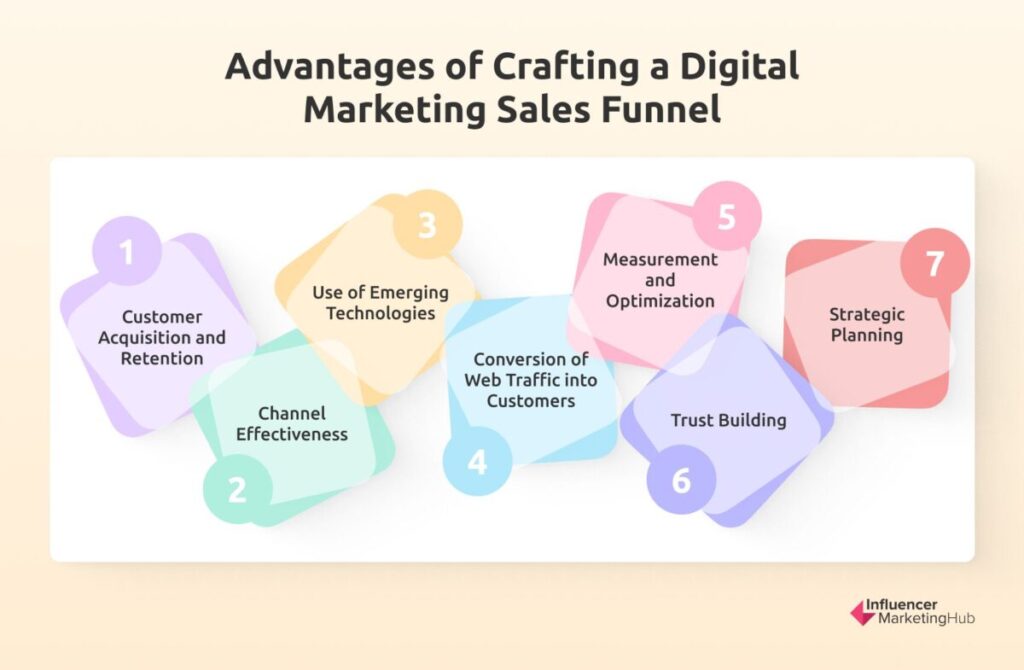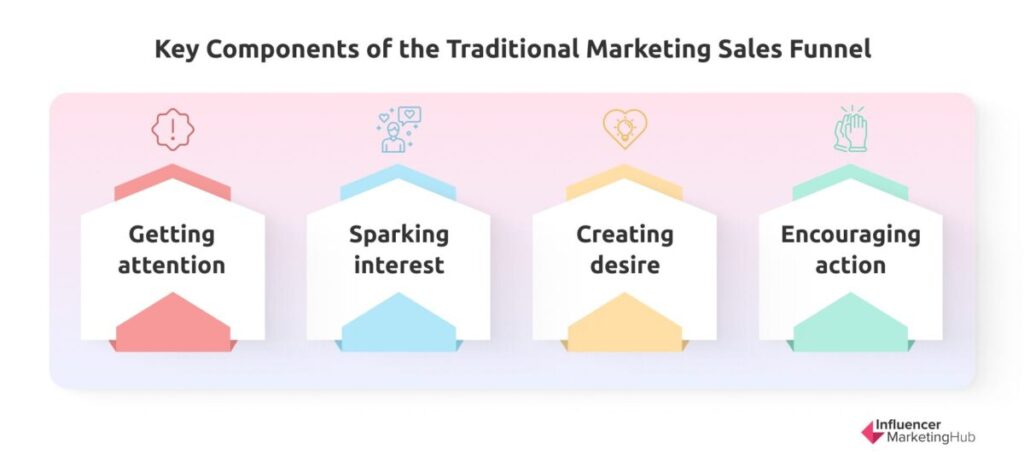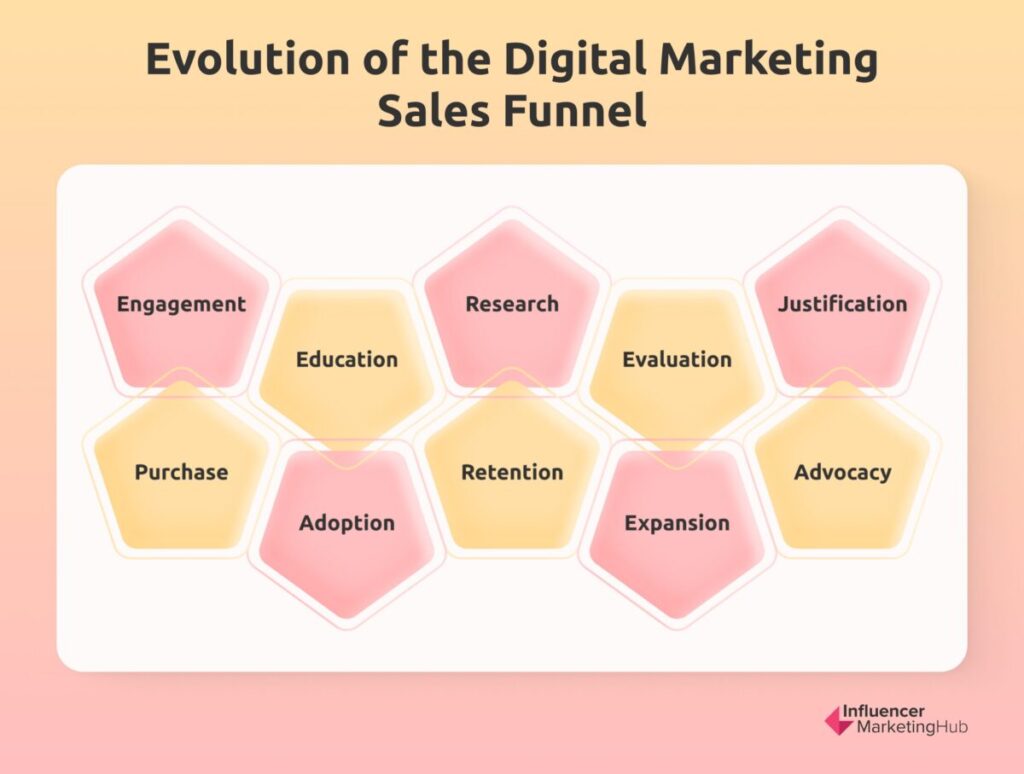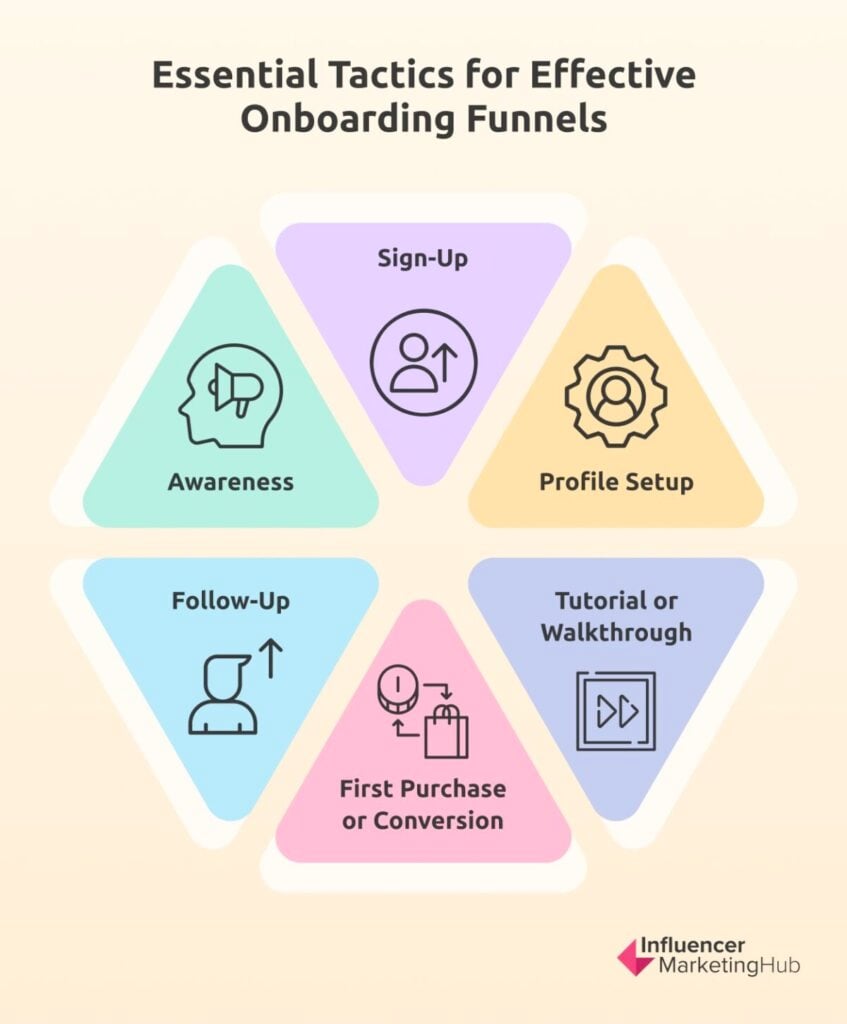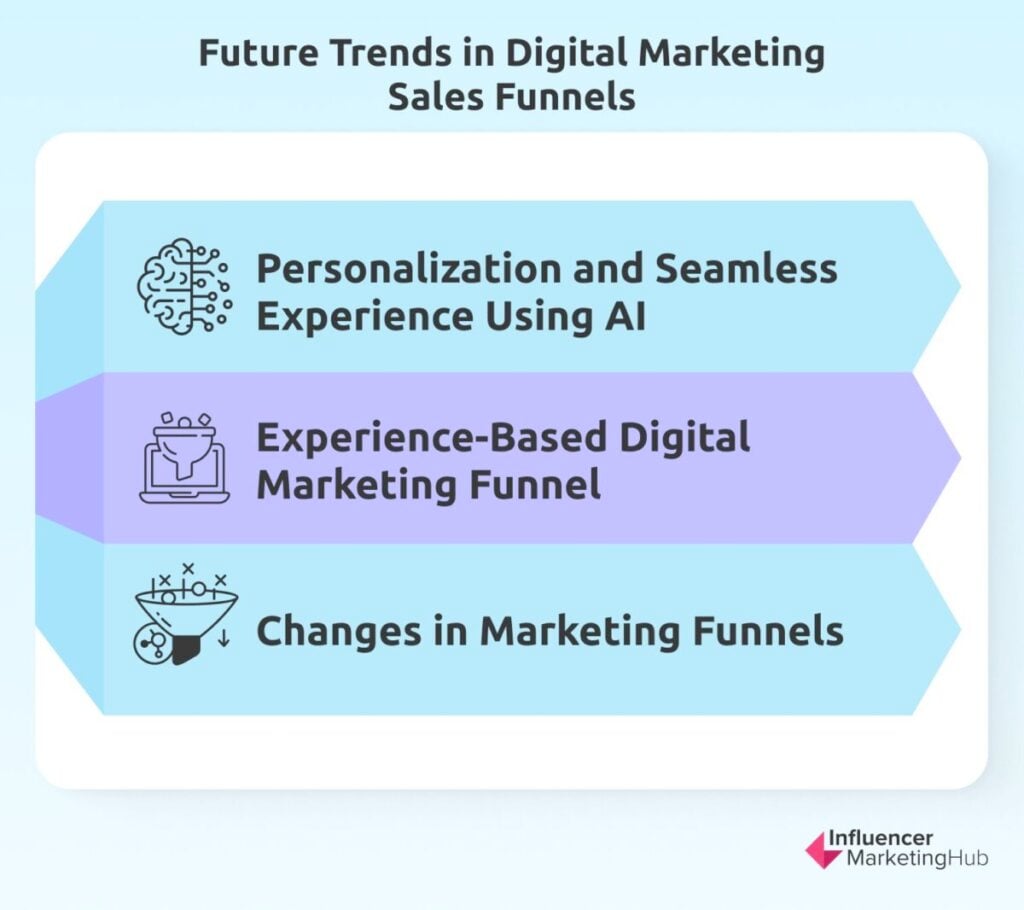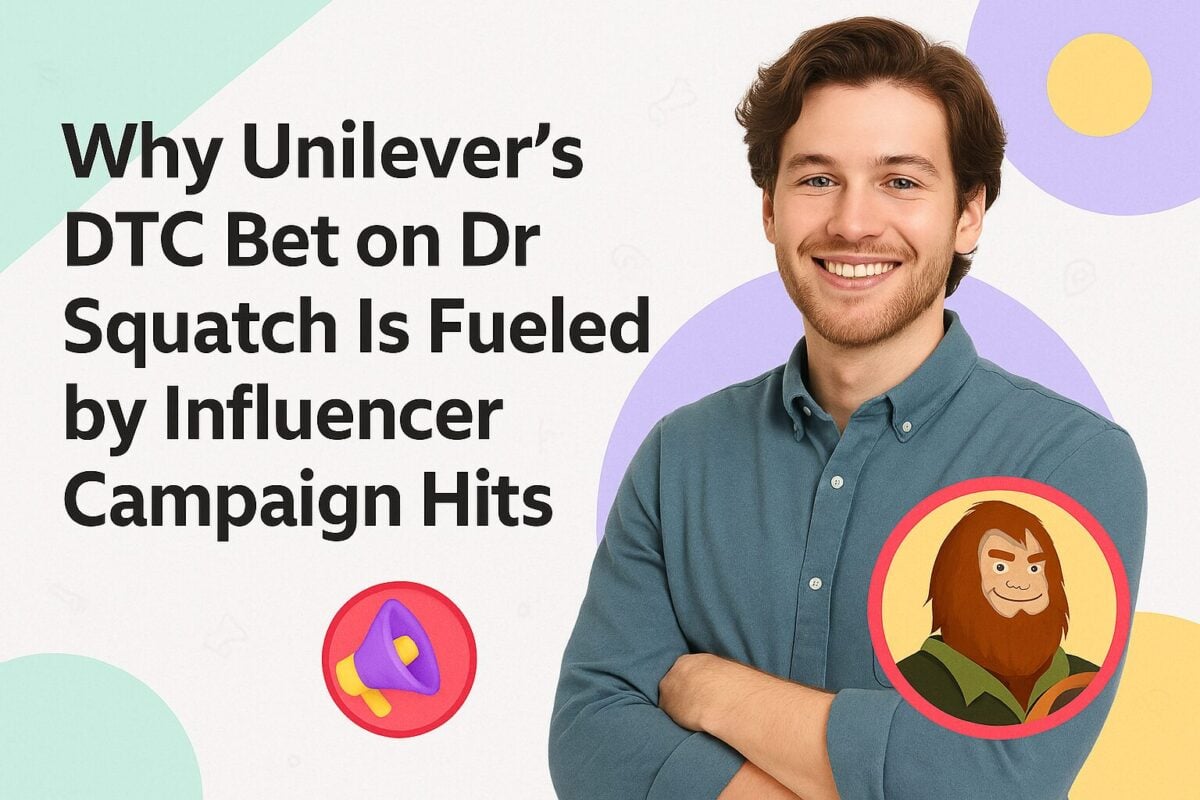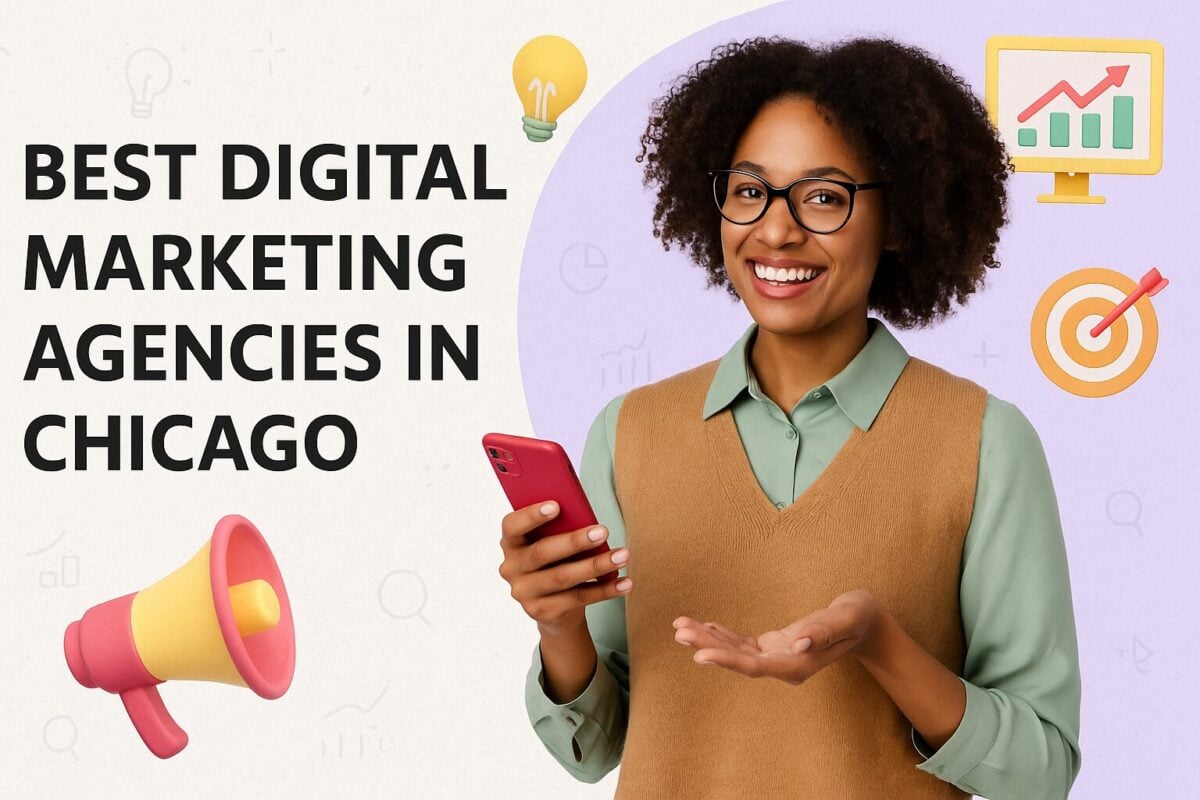Spending hundreds of thousands on a digital marketing sales funnel is smart. But only if you have a funnel that's driving qualified leads into the pipeline. After investing so much, the last thing you want to hear is that there's an overage of ad spend wastage and poor lead quality. Without the right steps, you'll continue to see these and other issues that hurt your return on investment.
In this digital marketing sales funnel guide, we'll walk through the proper steps to fix and build successful digital marketing campaigns. Plus, we'll share emerging trends according to experts, so you're prepared for what's to come.
Digital Marketing Sales Funnel Guide:
- What is a Digital Marketing Sales Funnel?
- Why Do You Need a Digital Marketing Sales Funnel?
- How does the traditional marketing sales funnel work?
- What does the digital marketing sales funnel look like today?
- The types of digital marketing sales funnels (and how to build them)
- Onboarding funnel
- How to create and use a digital marketing funnel
- Expert Insights About the Future of Digital Marketing Sales Funnels
- Frequently Asked Questions
What is a Digital Marketing Sales Funnel?
A digital marketing sales funnel represents the customer's journey from awareness to conversion and beyond. It includes seven stages: engagement, education, research, evaluation, justification, purchase, and adoption. Digital marketing sales funnels use various methods and tactics to attract, nurture, convert, and retain customers, including email marketing, content marketing, search engine marketing, and social media marketing.
Why Do You Need a Digital Marketing Sales Funnel?
The real question is, why not have a digital marketing sales funnel? Without one, you can't channel prospects into your sales pipeline to grow revenue and expand your operations.
Here's a look at the benefits of creating a digital marketing sales funnel:
- Customer Acquisition and Retention: A digital marketing sales funnel focuses on acquiring and retaining new customers. In 2021, 4 of the top 5 digital marketing objectives were directly related to acquiring new customers (according to a Gartner study).
- Channel Effectiveness: Digital marketing sales funnels allow businesses to use various channels for marketing effectively. According to Wpromote, over half of the marketers chose social marketing and digital advertising as preferred channels -- key components of a digital marketing sales funnel.
- Use of Emerging Technologies: Digital marketing sales funnels can incorporate emerging technologies such as AI and ML to deliver real-time, personalized experiences to customers. Roughly 84% of digital marketing leaders in Gartner's survey agree that using AI/ML enhances the marketing function's ability to deliver personalized experiences. However, adoption is still low, indicating a potential area for improvement in digital marketing sales funnels (and an opportunity to gain an edge).
- Conversion of Web Traffic into Customers: Funnels turn web traffic into customers on automation. The funnel process is grouped into stages, each guiding a potential customer closer to the purchase.
- Measurement and Optimization: A digital marketing sales funnel allows businesses to measure and optimize marketing efforts for better results.
- Trust Building: A well-structured digital marketing sales funnel builds trust with potential customers, critical in the digital space lacking face-to-face interaction.
- Strategic Planning: A digital marketing sales funnel provides a structured approach to planning and executing digital marketing strategies. It helps businesses identify their target audience, define their marketing objectives, and develop a strategy to achieve them.
How does the traditional marketing sales funnel work?
Before digital became the "final frontier" of buying products and services, it was all about offline methods (e.g., browsing and shopping in-store, calling around for prices, and such).
Today, the internet is the first and sometimes final step of their shopping experience. Unfortunately, some businesses still use the older, outdated model for the web, which focuses on:
- Getting attention: Often achieved through various marketing strategies such as advertising, social media marketing, content marketing, and search engine optimization. In the past, television, radio, and newspaper ads captured attention.
- Sparking interest: By providing valuable information, answering questions, and addressing potential customers' needs and pain points. In the past, excellent headlines and firstlines in ads sparked interest.
- Creating desire: Demonstrating the product's or service's benefits and value and how it can solve the customer's problem or meet their needs. In the past, enticing copywriting and images did the trick for print and media ads.
- Encouraging action: Purchasing, signing up for a newsletter, or contacting the company for more information. This is often achieved through calls to action, special offers, and other incentives. Previously, the CTA was often a phone number, address, or brand.
Note: the traditional marketing funnel is not a one-size-fits-all model. It varies from business to business and customer to customer. Furthermore, with the advent of digital marketing, the traditional marketing funnel has evolved to accommodate customers' changing behaviors and expectations in the digital age.
What does the digital marketing sales funnel look like today?
The sales funnel concept for digital marketing channels is similar but deeper. It considers all aspects of a customer's journey, extending beyond simply seeing a product, considering it, and then buying.
A lot happens between initial awareness and the final purchase. And the customer's journey doesn't end after buying. They must adopt and continue to use your product or service or you'll have to spend more time and money to keep your sales funnel and pipeline filled with prospective buyers.
Here's a look at how the digital marketing sales funnel evolved:
- Engagement: This is the initial stage where potential customers interact with the brand. The goal is to capture the audience's attention and engage them with your brand's message. Tactics include social media marketing, content marketing, and SEO. For example, an athletic wear brand may publish social media posts with fitness tips featuring models wearing their gear to attract potential customers.
- Education: In this stage, the brand informs the potential customer about its products or services. This can be done through blog posts, webinars, or educational videos. For example, a software company offering a free webinar to educate potential customers about its product.
- Research: Potential customers research the product or service to determine if it meets their needs. The brand can facilitate this process by providing detailed product information, customer reviews, and comparison charts. For example, an e-commerce website sharing detailed product descriptions and customer reviews to help potential customers in their research.
- Evaluation: In this stage, potential customers evaluate the product or service against other options in the market. The brand can help by highlighting its unique selling propositions. For example, a brand highlighting its superior product features or customer service to differentiate itself from competitors.
- Justification: Potential customers must justify their reason for buying. To help, a brand can give information on the value and benefits of the product or service. For example, a brand including case studies or testimonials on its site to help potential customers understand why they should buy.
- Purchase: The potential customer makes the purchase or conversion. The brand can make the purchase process easy and provide various payment options. For example, an e-commerce website may offer a one-click purchase option for faster checkouts.
- Adoption: The customer starts using the product or service. The brand can provide user guides, tutorials, or customer support for easier implementation. For example, a software company may provide tutorial videos and customer support to help customers adopt its software.
- Retention: The brand retains the customer by providing ongoing value. This is possible through customer support, updates, or additional services. For example, a software company may provide regular software updates and excellent customer support to retain its customers.
- Expansion: The customer purchases additional products or services from the brand. The brand can help by offering additional products or services that complement the initial purchase. For example, a software company may offer additional software modules that complement the initial software purchase.
- Advocacy: The customer becomes an advocate for the brand, recommending it to others. This happens when a brand provides excellent products and customer service and encourages customers to share their positive experiences. For example, a brand may encourage satisfied customers to write reviews or refer friends to the brand.
You don't have to build content for each stage, but it helps if you want to keep your customers long-term.
The types of digital marketing sales funnels (and how to build them)
How you build your digital marketing sales funnel depends on your business goals, customer journey, and the channels used to attract them.
Some marketers are changing how they build funnels as well.
According to Wpromote's survey, 19% of B2B marketers reported shifting from lower funnel demand generation to integrated full-funnel campaigns, indicating a trend towards a more comprehensive approach to the marketing funnel.
Let's review the different funnel types you can build for your digital marketing efforts.
Pro Tip:
Try using HubSpot's tools to strategize and optimize your sales funnels for maximum efficiency across every stage.
Lead generation funnel
Lead generation is the foundation of digital marketing funnels, guiding prospects to your virtual doorstep. Then, the rest of the funnel guides them through the journey to a purchase and beyond.
According to Wpromote, the top tactics to attract attention include email, brand marketing, social media posts, videos, personalized content, and blog posts.
Here's how it typically works:
- Attracting Prospects: The first step in lead generation is attracting potential customers to your business. This is possible using content marketing, SEO, social media marketing, and digital advertising.
- Capturing Information: Once a prospect shows interest in your business, capture their information. For instance, using a lead capture form on a landing page asking for their contact information.
- Offering Value: To encourage prospects to provide their contact information, businesses often offer something of value in return. This lead magnet can be a free trial, downloadable guide, consultation, or other valuable resource.
- Nurturing Leads: After capturing a lead's information, the next step is to nurture that lead through the sales funnel. For example, sending personalized emails, offering special deals, or providing additional valuable content. The goal is to build a relationship with the lead and encourage them to purchase.
- Qualifying Leads: Not all leads are created equal. Some may be more likely to purchase others. So qualify and focus on leads who are most likely to convert. An option is to use lead scoring, which assigns values to leads based on various factors, such as their website behavior, interactions with your emails, and fit with your target market.
- Converting Leads into Customers: Involves persuading the lead to purchase, which is possible through effective sales techniques and a seamless purchasing process. For example, after capturing information from a lead form, the brand can send the details to sales to reach out to the prospect.
For example, a real estate agency may use a lead generation funnel to attract potential home buyers. It starts by running targeted social media ads, showcasing new property listings and inviting users to sign up for a free property guide. Then, it sends a series of follow-up emails with detailed information about the properties, virtual tours, and success stories from satisfied home buyers. Finally, it sends a personalized email with a clear call to action, inviting the recipient to schedule a property viewing and offering a special incentive for booking a viewing appointment.
Email funnel
An email marketing funnel is a strategic framework used in digital marketing to guide potential customers through each stage of the buyer's journey using targeted email campaigns.
Here's how it works and some common tactics:
- Awareness: The first step in the email funnel is to make potential customers aware of your brand or product. This can be done through various methods, such as content marketing, SEO, social media marketing, and digital advertising. The goal is to attract prospects to your website and encourage them to sign up for your email list using a popup window.
- Interest: Once a prospect signs up for your email list, the next step is to pique their interest in your products or services. This is possible by sending them informative and engaging content relevant to their needs and interests. The content should provide value to the prospect and position your brand as a trusted authority in your industry. Use personalized content based on their behaviors and preferences.
- Consideration: As prospects become more interested in your brand, they move into the consideration stage of the funnel. During this stage, you should send them more detailed information about your products or services, such as product specifications, customer testimonials, and case studies. The goal is to convince the prospect that your product or service is the best solution to their problem.
- Conversion: The final stage of the email funnel is to persuade the prospect to purchase. One tactic is sending a targeted offer or discount code, or by providing a clear and compelling call to action. Make the purchasing process seamless for the prospect.
- Retention: After a prospect makes a purchase, they move into the retention stage of the funnel. The goal here is to turn one-time buyers into repeat customers. Do this by sending helpful content to help them use your product or service, and providing cross-sell and up-sell opportunities based on their purchase. The aim is to build a long-term relationship with the customer and encourage repeat purchases and brand loyalty.
For example, a company may use an email marketing funnel to promote a new product. It starts by emailing their list, announcing the product, and providing basic information about it. Then, it sends an email series with detailed information about the product, customer testimonials, and a special offer. Finally, it sends a final email with a clear call to action, encouraging the recipient to purchase the product.
Content funnel
A content marketing funnel uses targeted content for each stage of the buyer's journey.
Here's how it works and some common tactics used:
- Top of the Funnel (TOFU): The first step in the content funnel is to attract potential customers to your brand or product. The goal is to raise awareness and generate interest, so brands use educational and informative content to provide value to the reader while subtly introducing their brand or product. Common tactics include blog posts, social media content, infographics, and videos.
- Middle of the Funnel (MOFU): Once a prospect shows interest in your brand, the next step is to engage them further and nurture that interest. MOFU content helps prospects understand how your product or service can solve their problem. Common tactics at this stage include webinars, how-to guides, case studies, and white papers.
- Bottom of the Funnel (BOFU): After prospects understand how your product or service can help them, it's time to seal the deal. Ways to help them make a purchasing decision include sharing product demos, customer testimonials, and detailed product information.
For example, a software company may use a content marketing funnel to promote a new product. It starts by publishing a blog post about a common problem their product solves. This attracts potential customers searching for solutions to that problem. Next, it promotes a free webinar within that blog post, offering detailed information about the problem and introducing their product as a solution. Finally, it offers a free trial of its product at the end of the webinar, along with detailed product information and customer testimonials, to persuade the prospect to make a purchase.
The survey by Wpromote shows the top BOFU tactics are email, personalization/content, influencer marketing, organic social media, and video.
Webinar sign-up funnel
A webinar signup funnel guides prospective buyers to register for an upcoming webinar using various marketing techniques.
Here's how it works and some common tactics used:
- Webinar Landing Page: The first stage in the webinar funnel is attracting visitors to the webinar landing page and getting them to sign up. Success depends on the attractiveness of the topic, the quality of the copy, the timing of the webinar, the credibility of the host, and the number of registration form fields. It's recommended to ask as little as possible and as much as absolutely required on the registration form.
- Post-Registration Thank-You Page: Once visitors sign up for the webinar, they should be directed to a thank-you page. This page can provide additional information about the webinar, offer related resources, or encourage visitors to share it with their network.
- Email Follow-Up: After registration, keep the registrant engaged and remind them about the webinar. Use a series of automated emails that provide additional value, build anticipation for the webinar, and remind the registrant of the date and time.
- Webinar Presentation: The webinar delivers valuable content that addresses the audience's needs and interests, positions the host as a credible expert, and subtly promotes the product or service. The webinar should include a clear call to action, such as a special offer for attendees.
- Post-Webinar Follow-Up: After the webinar, follow up with attendees and no-shows to provide a replay of the webinar, additional resources, and another opportunity to take advantage of the offer. This stage is crucial for converting attendees into customers or leads.
For example, a company may use a webinar signup funnel to promote a new software product. It creates a landing page highlighting the problems the software solves and the host's expertise. After registration, it sends a series of emails that provide tips related to the webinar topic and build anticipation for the event. The webinar itself could provide a detailed demonstration of the software and a special offer for attendees. Finally, it follows up with a webinar replay and a final call to action.
Sales call booking funnel
A sales call booking funnel is a specific type of digital marketing sales funnel focused on scheduling calls with potential customers.
Here's how it typically works and some common tactics used:
- Targeted Outreach: The funnel begins with identifying and reaching out to potential leads through various digital marketing channels, such as email campaigns, social media, or paid ads.
- Value Proposition: Communicate the value of the call to the potential customer, often by highlighting the product or service's benefits and how it can solve their specific problems.
- Scheduling Mechanism: Implement an easy-to-use scheduling tool like Calendly to allow leads to book a call at their convenience. This tool can also send automatic notifications to reduce no-shows.
- Lead Qualification: Before or during the scheduling process, qualify leads to ensure that the sales team's time is spent on calls with potential customers with genuine interest or need for the product or service.
- Pre-Call Preparation: Use the information gathered during lead generation and qualification to prepare for the call, tailoring the conversation to address the lead's interests, pain points, and questions.
- Follow-Up: After the call, follow up with the lead to provide additional information, answer any remaining questions, and guide them to the next step in the sales process, whether a demo, a trial, or a purchase.
For example, a company selling high-value B2B software may use targeted LinkedIn ads to reach decision-makers in its industry. Interested prospects click the ad to visit a landing page to learn more about the software, and use an embedded Calendly widget to schedule a call with a sales representative. After the call, the sales team sends a follow-up email with further product details and next steps.
Onboarding funnel
An onboarding funnel is a crucial part of the digital marketing sales funnel, specifically designed to guide new users or potential customers through steps that help them understand and engage with a product or service.
Here's how it typically works and some common tactics used:
- Awareness: The first step in the onboarding funnel is making potential customers aware of the product or service. This can be achieved through various digital marketing strategies such as content marketing, social media marketing, SEO, and paid ads.
- Sign-Up: Once the potential customer knows the product or service, the next step is encouraging them to sign up for an account. This can be facilitated by making the sign-up process as simple and straightforward as possible and offering incentives such as free trials or discounts.
- Profile Setup: After signing up, users are typically guided to set up their profile. This step is crucial as it helps personalize the user experience and allows the company to gather valuable data about the user.
- Tutorial or Walkthrough: To help users understand how to use the product or service, an interactive tutorial or walkthrough is often provided. This step is crucial in reducing user confusion and increasing product engagement.
- First Purchase or Conversion: The final step in the onboarding funnel is the first purchase or conversion. This is the ultimate goal of the onboarding process and is often facilitated by offering special deals or discounts for first-time users.
- Follow-Up: After the first purchase or conversion, follow-up communications are sent to the user to encourage continued engagement with the product or service. This can include emails, push notifications, or personalized content recommendations.
For example, a streaming service might use targeted ads to inform potential users of their platform. Interested users could sign up for a free trial and set up their profile. After signing up, they would be guided through a tutorial to navigate the platform and find content that interests them. Once the free trial ends, they might be offered a discounted subscription to encourage them to make their first purchase. After subscribing, they would receive personalized content recommendations and other follow-up communications to keep them engaged with the service.
How to create and use a digital marketing funnel
Here's how to create and use a digital marketing funnel:
- Define Your Target Audience: Understand who your ideal customers are. This includes demographic information, interests, and behaviors. For example, if you're a fitness brand, your target audience may be health-conscious individuals aged 18-35. Use market research and customer data to define your target audience.
- Set Clear Marketing Goals: Determine your goals with your marketing efforts. This could be increasing brand awareness, generating leads, or boosting sales. For example, a goal could be to increase website traffic by 20% in the next quarter. Ensure your goals are SMART (Specific, Measurable, Achievable, Relevant, Time-bound).
- Create Awareness Through Marketing Channels: Use various channels to make potential customers aware of your brand. For example, publish helpful advice and engage in other posts on social media.
- Build Out Your Content Marketing Strategy: Create valuable content that attracts and engages your audience throughout the buyers journey. For instance, designing TOFU, MOFU, and BOFU content that resonates with your audience’s pain points and desires. Roughly 35% of B2B marketers reported moving away from single-channel dependence to a diversified marketing strategy, so consider doing the same.
- Prioritize SEO: Optimize your content to rank higher in search engine results.
- Be Selective About Social Media: Choose the platforms where your target audience is most active.
- Repurpose Content: Use one piece of content in multiple ways to maximize its value. For example, turn podcasts into blog posts and chop up both to create audio snippets and text for social posts and emails.
- Drive Traffic to Your Website or Landing Page: Use strategies like influencer marketing to attract visitors to your site. For example, collaborate with a popular blogger in your industry to promote your brand. Make sure your website is user-friendly and optimized for conversions.
- Capture Qualified Leads: Use a lead magnet (like a free ebook or webinar) to encourage visitors to provide their contact information. For example, offer a free product trial in exchange for an email address. Make the lead magnet valuable and relevant to your target audience.
- Add a Lead-Tracking Strategy: Monitor where your leads come from and how they interact with your brand. Use tools like Google Analytics or a CRM to track your leads.
- Nurture Your New Leads: Use strategies like email marketing to build relationships with your leads and move them further down the funnel. Personalize your emails to make your leads feel valued and understood.
- Convert Leads into Customers: Use strategies like offering limited-time discounts or free shipping to encourage leads to make a purchase. Make the purchasing process as easy and straightforward as possible.
- Close the Sale: Finalize the transaction and provide excellent customer service to ensure satisfaction. Follow up with customers after the sale to ask for feedback and address any issues.
- Upsell and Retain Customers: Encourage repeat purchases and loyalty by offering additional products or services that complement the customer’s purchase. Offer special deals or rewards to loyal customers.
- Analyze and Optimize Your Funnel's Performance: Regularly review your funnel's performance and make necessary adjustments to improve its effectiveness. Use A/B testing to determine what strategies work best.
- Add Paid Strategies for Tailoring and Awareness: Use paid advertising to reach a larger audience and increase brand awareness. More than half of the marketers chose social marketing and digital advertising as preferred channels. Also, test targeted ads to reach your specific audience.
The two goals where the highest percentage of respondents (29%) said they fell short were quantitative measures, such as acquiring or retaining new customers. So, always monitor these metrics and adjust your strategies as needed.
Expert Insights About the Future of Digital Marketing Sales Funnels
So what are the brands and marketers in the field saying about the future of the digital marketing sales funnel?
Let’s take a look.
Personalization and Seamless Experience Using AI
“The future of digital marketing sales funnels lies in leveraging technology to create more personalized, engaging, and seamless customer experiences across various channels,” shares Rasa Urbonaitė, CMO at Breezit. “My experiences at Breezit have underscored the importance of embracing these changes to stay relevant and competitive in the digital marketplace.”
Here’s an overview of his other insights:
- Sales funnels are undergoing a transformative shift, reflecting the dynamic nature of consumer behavior and technological advancements.
- AI integration and data analytics have enabled the creation of highly personalized customer journeys.
- AI analyzes customer interactions to offer relevant venue suggestions, enhancing engagement and conversion rates.
- Omnichannel strategies ensure consistency across channels, providing a cohesive brand experience.
- The future of digital marketing sales funnels lies in leveraging technology to create personalized, engaging, and seamless customer experiences.
Experience-Based Digital Marketing Funnel
“I believe the digital marketing funnel is moving to be more experience-based, so we can expect it to shorten because users can find decision-making information more quickly,” says Angela Petulla, Freelance Founder and SEO consultant at Index and Rank.
Here’s why she thinks this to be true:
- The digital marketing funnel is moving towards being more experience-based.
- The rise of influencers allows consumers to experience products without purchasing them.
- Google's Search Quality Rater Guidelines now include "experience" to deliver genuine experiences in search (E-E-A-T).
- Google's Circle to Search and multisearch experience merge organic search with real-life experiences.
- As the funnel becomes more experience-based, it is expected to shorten due to quicker access to decision-making information.
Changes in Marketing Funnels
“Today, there's no true funnel like we used to have. It's like in space where there is no up or down -- we have to adjust how we think about these things,” explains Gabe Mays, Co-Founder & CEO of POPSMASH. “I haven't found a model that explains this well yet, but I've been calling it 'personalized discovery' since discovery could happen anywhere, but personalization is the important thing due to the demise of the traditional funnel and target quality."
Here’s the reasoning behind his prediction:
- Discovery has shifted from traditional media to social media with influencers and AI recommendations.
- Advertisers have less control over when and how consumers discover their brands.
- Targeting has changed from narrow to broad due to privacy changes and the demise of third-party cookies.
- Brands need to 'bag and tag' consumers as they enter channels to understand who they are and where they came from (e.g. email or SMS list) by leveraging the 'social native' behaviors that consumers participate in on social media (discovery).
- Personalized discovery is essential in the absence of traditional narrow targeting.
- Brand building is more important as traditional funnels are less reliable.
Here’s his example of the old and new ways of funneling customers into your pipeline:
Old way: Narrow targeting with rich Instagram/Facebook data ➡ broad comms. (e.g. generic email/SMS welcome series)
New way: Broad targeting ➡ enriched by other means ➡ personalized comms. (e.g. personalized email/SMS welcome series)
“The difference here is that previously more targeted consumers entered the 'funnel' thanks to targeted advertising,” notes Mays.
Start Building a High-Converting Digital Marketing Sales Funnel
There's no one way to build a digital marketing sales funnel. It comes down to your industry, target audience, and business goals.
If you need help figuring this out, consider working with a freelance or fractional content strategist or hire a digital marketing agency.
Whatever you decide, remember the above tips to ensure you build a holistic sales funnel that drives sales and increases customer loyalty.
Frequently Asked Questions
What is a sales funnel in digital marketing?
A digital marketing sales funnel is a process that guides a potential customer from first awareness of your brand to the ultimate goal of purchase. It's a strategic model that visualizes the customer journey towards the conversion of a sale, moving from the initial stage of awareness to interest, decision, and finally, action. The funnel metaphor suggests that as a potential customer moves closer to the purchase, the number of people continues to decrease, hence the 'funnel' shape.
What are the 4 steps of funneling in digital marketing?
The four steps of funneling in digital marketing, often referred to as the content marketing funnel, are:
- Awareness: This is the stage where potential customers first become aware of your brand or product. The goal here is to attract and educate your audience.
- Evaluation: At this stage, potential customers are considering whether your product or service is a good fit for their needs.
- Conversion: This is the stage where potential customers decide to make a purchase.
- Delight: After the purchase, the goal is to provide exceptional service and support to the customer, turning them into a loyal customer and advocate for your brand.
How do you create a digital marketing sales funnel?
Creating a digital marketing sales funnel involves several steps:
- Define Your Audience: Understand who your potential customers are and what their needs and preferences are.
- Attract Your Audience: Use various marketing strategies to attract your audience to your funnel. This could include content marketing, SEO, social media marketing, and paid advertising.
- Engage Your Audience: Once your audience is aware of your brand, engage them with valuable and relevant content.
- Convert Your Audience: Use strategies like email marketing, retargeting, and persuasive copy to convert your audience into customers.
- Delight Your Customers: After the purchase, provide excellent customer service and engage with your customers to turn them into repeat customers and brand advocates.
What are the 7 layers of the sales funnel?
The 7 layers of the sales funnel represent the stages a customer goes through, from learning about a product or service to becoming a brand advocate. Here's a brief description of each layer:
- Awareness: Potential customers become aware of a product or service.
- Interest: They show interest by seeking out more information.
- Consideration: They consider whether the product or service meets their needs.
- Intent: They demonstrate an intent to purchase.
- Purchase: They make the actual purchase.
- Loyalty: They become repeat customers due to satisfaction with the product or service.
- Advocacy: They recommend the product or service to others, becoming brand advocates.
